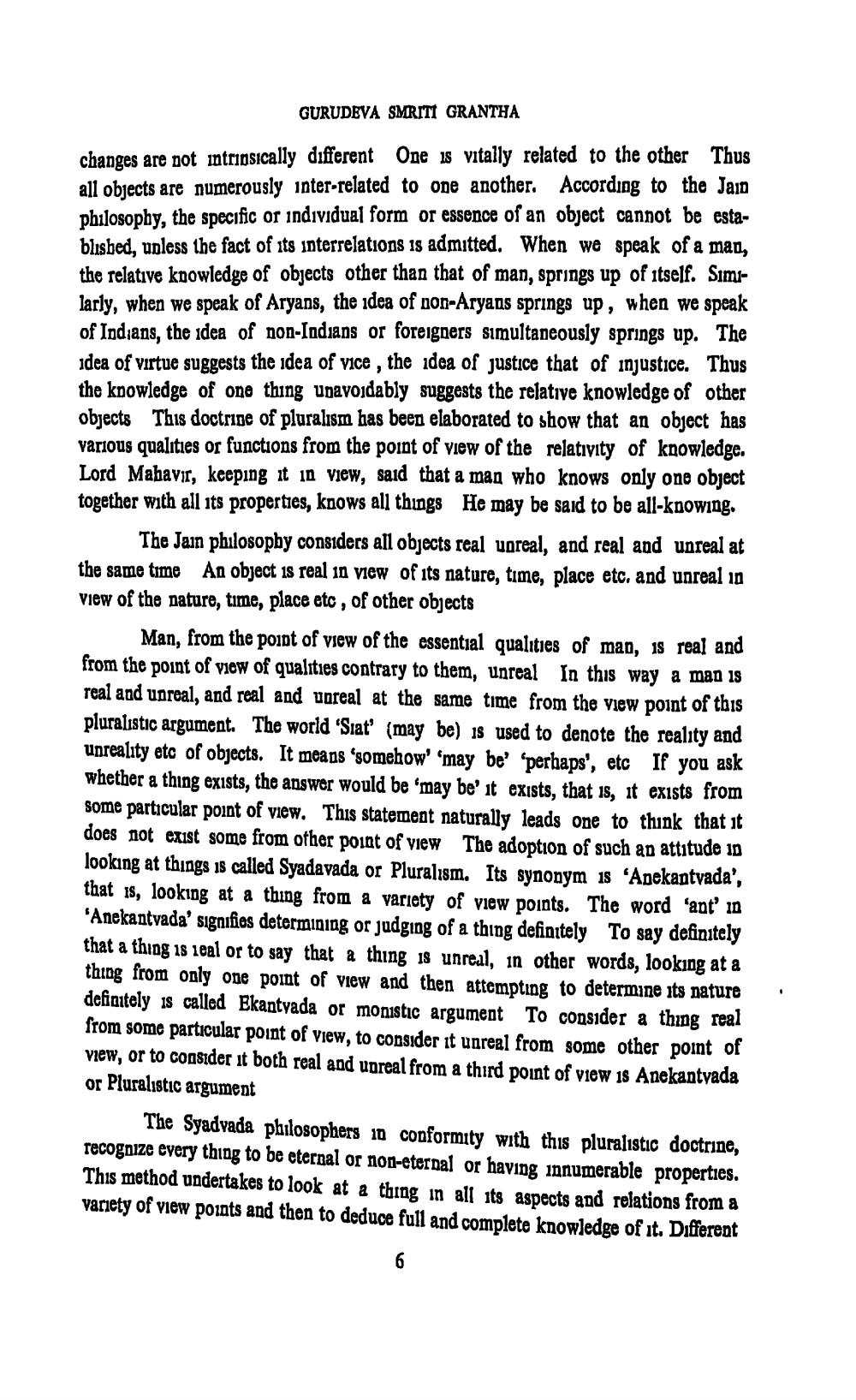________________
GURUDEVA SMRITT GRANTHA changes are not intrinsically different One is vitally related to the other Thus all objects are numerously inter-related to one another. According to the Jain philosophy, the specific or individual form or essence of an object cannot be established, unless the fact of its interrelations 18 admitted. When we speak of a man, the relative kpowledge of objects other than that of man, springs up of itself. Similarly, when we speak of Aryans, the idea of non-Aryans springs up, when we speak of Indians, the idea of non-Indians or foreigners simultaneously springs up. The idea of virtue suggests the idea of vice , the idea of justice that of injustice. Thus the knowledge of one thing unavoidably suggests the relative knowledge of other objects This doctrine of pluralism has been elaborated to show that an object has various qualities or functions from the point of view of the relativity of knowledge. Lord Mahavir, keeping it in view, said that a man who knows only one object together with all its properties, knows all things He may be said to be all-knowing.
The Jain philosophy considers all objects real woreal, and real and unreal at the same time An object is real in view of its nature, time, place etc. and unreal in view of the nature, time, place etc , of other objects
Man, from the point of view of the essential qualities of man, is real and from the point of view of qualities contrary to them, unreal In this way a man is real and unreal, and real and unreal at the same time from the view point of this pluralistic argument. The world 'Slat' (may be) is used to denote the reality and unreality etc of objects. It means 'somehow' 'may be 'perhaps', etc If you ask whether a thing exists, the answer would be 'may be' it exists, that is, it exists from some particular point of view. This statement naturally leads one to think that it does not exist some from other point of view The adoption of such an attitude in looking at things is called Syadavada or Pluralism. Its synonym is 'Anekantvada', that is, looking at a thing from a variety of view points. The word "ant' in 'Anekantvada' signifies determining or judging of a thing definitely To say definitely that a thing is seal or to say that a thing is unreal, in other words, looking at a thing from only one point of view and then attempting to determine its nature definitely is called Ekantyada or monistic argument to consider a thing real from some particular point of view, to consider it unreal from some other point of view, or to consider it both real and unreal from a third point of view is Anekantyada or Pluralistic argument
The Syadvada philosophers 10 conformity with this pluralistic doctrine, recognize every thing to be eternal or non-eternal or having innumerable properties. This method undertakes to look at a thing in all its aspects and relations from a variety of view points and then to deduce full and complete knowledge of it. Different




